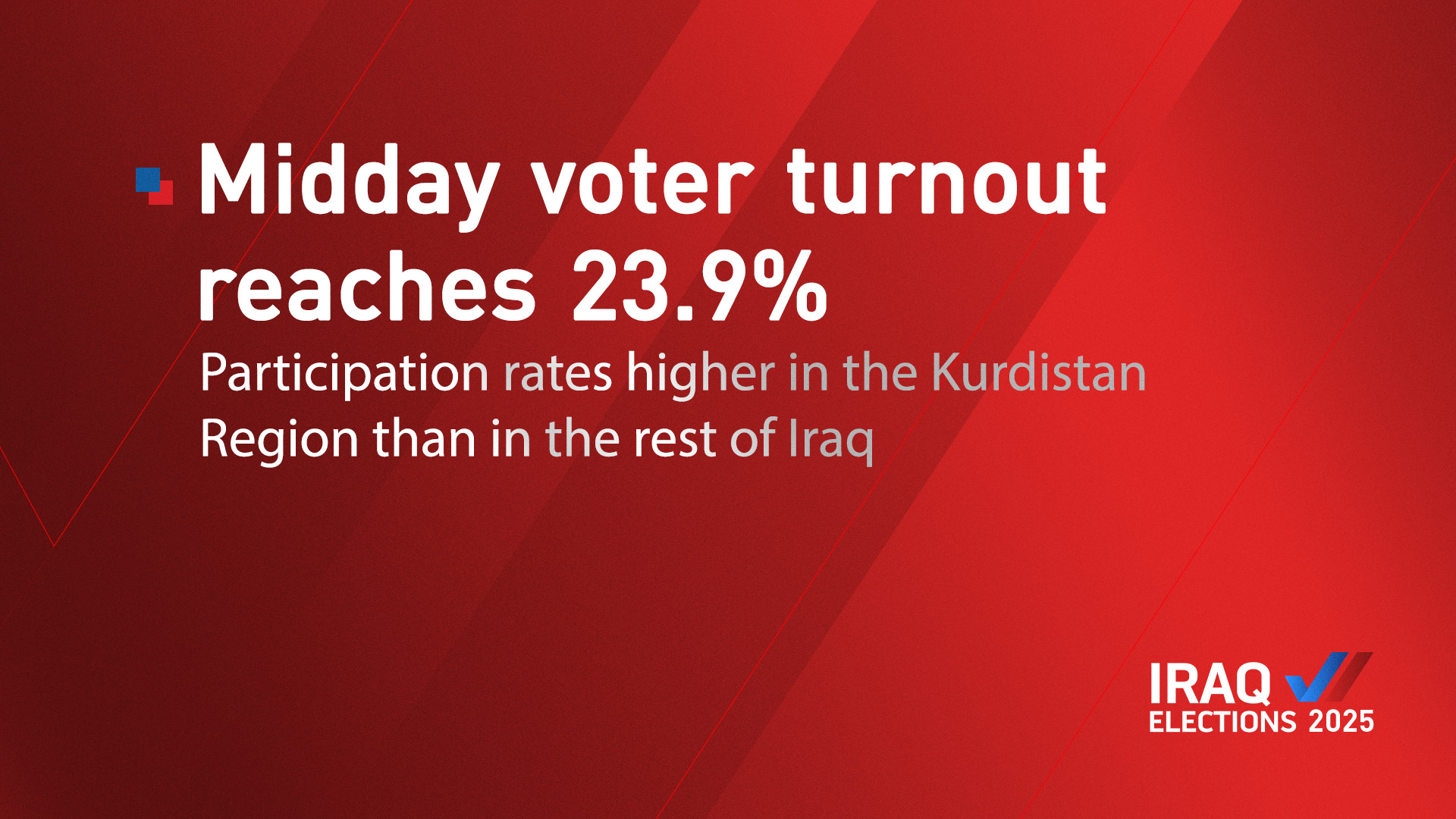Iraq’s Election Commission Reports 23.9% Voter Turnout by Midday as Kurdistan Region Leads in Participation
Early results show relatively high engagement in Erbil and other northern provinces, while southern governorates record lower turnout amid political fatigue and public disillusionment.

ERBIL (Kurdistan24) — The Iraqi Independent High Electoral Commission (IHEC) announced on Tuesday that nationwide voter turnout for the parliamentary elections reached 23.9% by midday, reflecting a moderate level of participation as citizens across the country cast their ballots to elect members of the sixth Iraqi parliament.
According to data released by the Commission, the highest turnout rates were recorded in Salahaddin (31.57%), Nineveh (30.67%), and Anbar (30.51%), with the Kurdistan Region’s capital, Erbil, following closely at 28.93%, continuing its record of strong electoral engagement. Duhok and Sulaimani, the two other provinces of the Kurdistan Region, recorded 27.36% and 24.88%, respectively.
Meanwhile, the southern provinces—traditionally marked by lower voter confidence—showed significantly reduced turnout.
Basra (22.21%), Dhi Qar (21.90%), and Maysan (16.63%) all fell below the national average, underscoring the widening gap between Iraq’s northern and southern voter participation levels.
Experts say this trend reflects persistent regional and political divides. The Kurdistan Region, where political institutions are relatively stable and parties maintain strong grassroots structures, continues to demonstrate higher electoral mobilization.
In contrast, much of the southern and central regions, long plagued by corruption scandals, service failures, and protest fatigue, have seen declining enthusiasm for elections—despite the government’s pledges of reform.
Observers also note that the midday turnout rate of 23.9% could increase in the second half of the day, as polling stations remain open until the evening.
IHEC officials have expressed confidence that participation would rise as the day progresses, particularly in urban centers where security has been tight and the voting process described as “orderly and smooth.”
These elections mark a critical test for Iraq’s democratic institutions following years of political instability, public protests, and tensions between Baghdad and the Kurdistan Region over budget allocations and constitutional disputes.
The outcome is expected to shape the composition of the next Iraqi government, which will face mounting pressure to restore public trust and deliver tangible governance reforms.
IHEC is expected to announce preliminary results within 24 hours after polls close, as ballot counting proceeds electronically under enhanced monitoring mechanisms designed to prevent the technical issues that marred previous elections. More than 20 million eligible voters were invited to choose 329 members of Iraq’s sixth parliament.
As ballots are tallied, attention will shift to how political blocs—particularly those aligned with Shiite factions, Sunni coalitions, and Kurdish parties—negotiate the formation of a new government.
Many Iraqis, weary of gridlock and economic hardship, are hoping this vote can deliver stability and accountability, though skepticism remains high.
